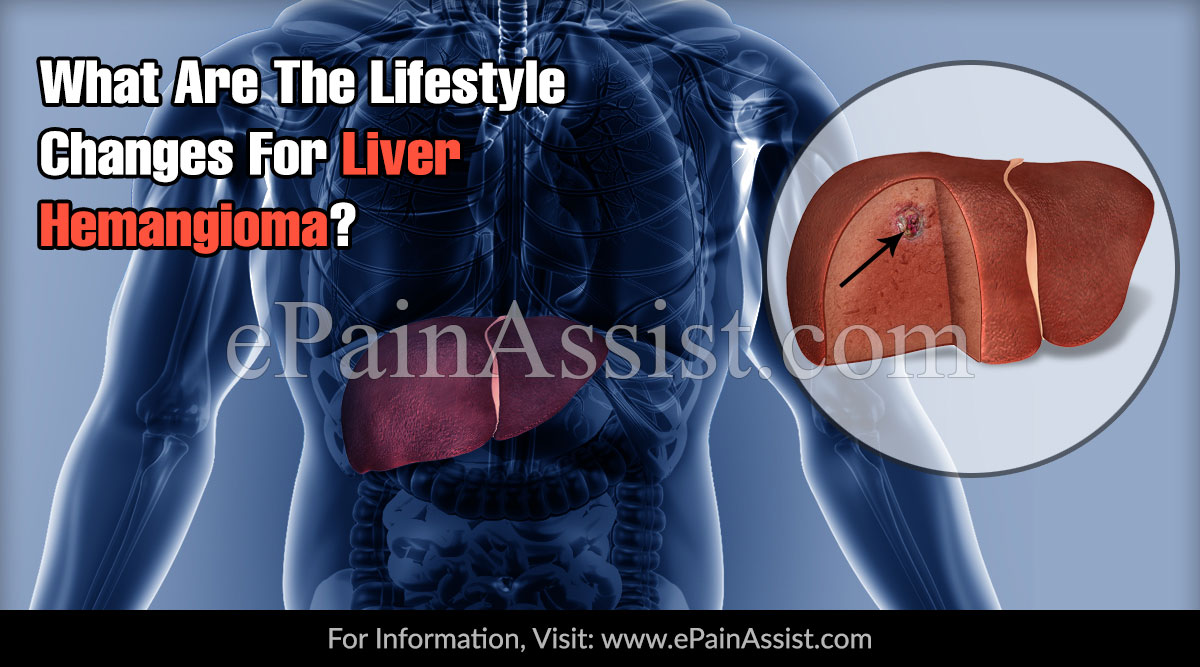A hemangioma is an extra, abnormal collection of blood vessels in the skin. Usually known by everyone as birthmarks, they are also known as vascular tumors. Most common birthmarks in children, they are present at birth or may appear three to six months after birth. These are benign (non-cancerous) growths. They are usually harmless and do not require any treatment as such. Interference is needed only if these growths disturb the functions of organs.
This type of a hemangioma may appear on the internal organs as well, such as liver, kidney and lungs. When present on the liver, it is known as liver hemangioma or hepatic hemangioma.
Liver hemangiomas generally do not show any obvious symptoms, unless they grow very large or are present at a very awkward location, which can affect liver function.

What Are The Lifestyle Changes For Liver Hemangioma?
Liver hemangioma as described earlier is generally harmless. You may not need to make any lifestyle changes at all. However, if you underwent a surgery, then post-operative care must be taken, as liver is one of the most important organs of our body. Also, certain measures can be taken to avoid any other complications related to the liver. Alcohol consumption, primarily, must be brought down significantly. Alcohol is the most important factor in damaging the liver beyond repair. Also, smoking must be stopped to avoid liver damage. If you are overweight or obese, then keeping your weight in check will relieve you of any bodily complications, including liver conditions. Though there is no specific diet plan for liver hemangioma, either for prevention or for cure, diet generally helpful for liver is recommended. It is good to have a diet low in fats, proteins and high in carbohydrates. Also, fresh fruits and vegetables in a variety should be included in the diet.
As the exact cause of a liver hemangioma is still unknown, it is very difficult to pinpoint certain measures or lifestyle changes that will prevent liver hemangioma from developing. However, if above mentioned lifestyle modifications are carried out, then there will be considerably less chances of developing complications related to liver hemangioma, if at all you have one.
Diagnosis of Liver Hemangioma
Liver hemangiomas are generally diagnosed accidentally. They usually happen to be seen when one is undergoing some diagnostic tests and procedures for some altogether different ailment. Once diagnosed, they do not necessarily need treatment, because they are usually asymptomatic, as described earlier. They may need treatment only if they grow too large or they produce any symptoms.
In that case, there are several options which a doctor might consider. Surgical removal of the hemangioma will be the choice of option, if it is possible to remove it without causing any unnecessary harm to the liver. If this option is not possible, then there may be a need to remove a part of the liver along with the hemangioma. Also, in some cases, it may be considered to tie up the main blood vessel that supplies blood to the liver, so that the blood supply stops. In this way, the hemangioma cannot grow further without the blood supply, and will eventually reduce to a smaller size and then disappear. If all these methods cannot be implemented, then doctors may consider radiation therapy. But, it is not a choice of treatment, as more safe methods than the radiation therapy are available these days.
Whatever the treatment carried out may be the post treatment care must be taken as with any other ailment. Also, it is not possible to prevent a hemangioma from developing; hence, there is no particular lifestyle or a set diet to be followed, in order to prevent it. But, certain lifestyle guidelines can be followed, to keep the general health of the liver in its prime. The below mentioned guidelines will help in maintaining the optimal health of the liver.
Also Read:
- Polycystic Liver Disease (PLD): Causes, Symptoms, Signs, Diagnosis, Treatment
- Ischemic Hepatitis or Shock Liver: Causes, Symptoms, Treatment
- Steatosis of Liver: Causes, Symptoms, Treatment, Diet, Pathophysiology, Epidemiology, Prevention
- Liver Metastases: Causes, Symptoms, Treatment, Stages, Survival Rate, Prognosis
- How Do I Take Care of My Kidneys and Liver?
- What Causes Liver Spots on Face, Hands, and Skin & How to Get Rid of It?
- Types of Liver Infection: Viral and Non-Viral Liver Infection
